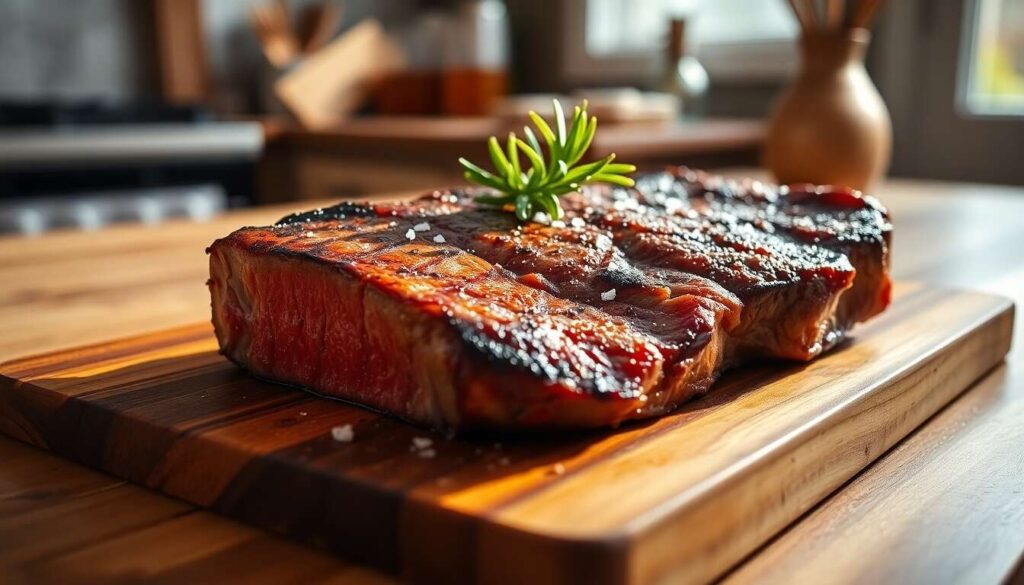Achieving the perfect steak is a dream shared by many home cooks. The secret often lies in meticulous details, such as the 3-1 rule, which guides you step-by-step toward a successful culinary experience. Let’s explore the essential elements of this indispensable method.
Understanding the 3-1 Rule for Perfect Cooking
Three Crucial Steps
The 3-1 rule is composed of three simple yet essential steps designed to help you prepare a savory and juicy steak.
- Sear (3 minutes): Preheat a heavy-bottomed skillet until hot. Place the seasoned steak, sprinkled with salt and pepper, into the pan and let it cook undisturbed for three minutes to develop a golden crust.
- Cook (another 3 minutes): Flip the steak and let the other side cook for an additional three minutes to achieve rare doneness. Feel free to adjust the timing according to your personal preferences.
- Rest (1 minute): Transfer the steak to a warm plate and allow it to rest for one minute. This step allows the juices to redistribute, ensuring a tender piece of meat.
Common Mistakes to Avoid
A common pitfall is flipping the steak too early, which prevents the formation of a delicious crust and leads to a loss of vital juices. Patience is key!
Now that you’ve mastered the 3-1 rule, let’s focus on the importance of selecting the cut and quality of your meat for even tastier results.
Choosing the Cut and Quality of Your Meat
The Impact of the Cut on Cooking
Each cut of meat has unique characteristics that influence its cooking and flavor. Choose well-marbled cuts like ribeye or sirloin, as they strike a fine balance between meat and fat, ensuring optimal tenderness and juiciness.
The Quality of Meat: An Undeniable Factor
The quality of meat largely depends on its origin and raising methods. Prioritize meat from local producers who offer guarantees regarding animal feeding and welfare.
| Type of Meat | Fat Proportion | Recommended for |
|---|---|---|
| Ribeye | 18% | Rare Cooking |
| Sirloin | 10% | Medium Cooking |
By wisely choosing your meat, you lay the groundwork for a successful steak. But the performance doesn’t end there; the resting time after cooking is equally vital.
The Importance of Resting After Cooking
Why Resting Makes All the Difference
Letting your steak rest after cooking allows the muscle fibers to relax and the juices to stabilize. This simple act makes your meat more tender and prevents it from losing all its juices upon the first cut.
How to Properly Rest a Steak
As soon as the steak is removed from the skillet, place it on a warm plate and lightly cover it to retain heat without further cooking. One to two minutes is sufficient for achieving the perfect texture.
Now that you understand the significance of resting, let’s turn to seasonings that can elevate your already delicious steak to exceptional culinary heights.
Seasonings to Enhance Your Steak
The Basics of Seasoning
Proper seasoning is crucial for enhancing the natural flavor of the steak. Salt, pepper, and aromatic herbs are your best allies in accentuating the taste of the meat.
Experimenting with Flavors
Let your creativity flow with additions such as:
- Cayenne pepper for a spicy kick
- Crushed garlic cloves for an authentic flavor
- A drizzle of olive oil or truffle oil for depth of flavor
With these tips, you hold the keys to cooking an impeccable steak, from selecting the ingredients to perfecting the seasoning.
By applying the 3-1 rule and ensuring attention to every step, you can expect to savor a delightful steak with each preparation. Whether choosing the right cut, not overlooking the resting phase after cooking, or experimenting with seasonings, every detail matters in maximizing your culinary pleasure. Explore various combinations and don’t hesitate to vary your delights with the recommended products, available [affi=id], to enhance your moments at the table.







